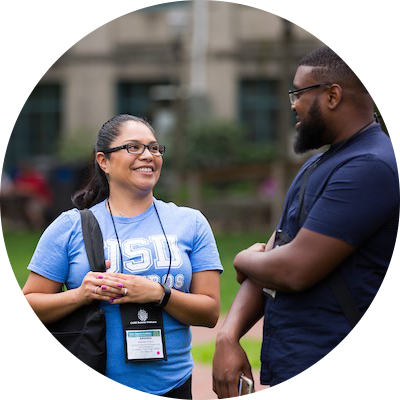
Dialing In a New Annual Fund Strategy
by Martin Shell and Amy Wilson
Excerpted from Currents, March/April 2017
In September 2016, Stanford University made a surprising decision: We eliminated our phone program for fundraising, the result of a dramatic rise in negative responses to our calling.
In 2011, for every eight people who answered our calls and made gifts, only one said, “Never call me again.” By 2015, the ratio was 3-to-1. From complaints in our general inbox to offhand comments in meetings with alumni, we knew that our calls were alienating prospective donors—and that we were compromising tomorrow’s gifts with today’s annoying asks.
Participation Panic
“But what about your participation rate?”
That’s the most common question we’ve heard since announcing our decision. We gave this factor serious consideration yet kept asking ourselves, “Why do we care so much about participation rates in any one year?”
Setting goals around participation is like setting CEO compensation around share price—it incentivizes short-term gains instead of creating long-term value. Just as a company can drive a share price through short-term strategies like a stock buyback, annual giving programs can increase short-term participation rates through strategies like premiums, challenge gifts, or even an aggressive calling program. While many of our peer institutions are under pressure to reach ambitious participation goals, we think it is time to acknowledge that these tactics often have a short shelf life and that in the long term, they don’t cultivate philanthropic behavior.
What Comes Next
It will be a few years before we know whether we’re on the right path. For now, we are investing our telefund budget in new staff and new marketing programs. We hope to appeal to those who formerly gave through the telefund as well as to those who may have been alienated by our calls.
Because 70 percent of telefund donors were making renewal gifts (LYBUNTs in annual fund terms), we are investing in efforts aimed at retaining donors, such as a new loyalty program that will recognize and encourage consistent giving. Additionally, we are devoting staff time and expertise to direct appeal channel analysis. The goal is to refine our messaging, segmentation, and channel selection on a targeted basis, reaching not only former telefund donors but all constituents with messaging and solicitations relevant to their interests.
We are also investing in digital programs that facilitate targeted campaigns like Giving Tuesday and improved email strategies that will benefit all school- or unit-based annual giving programs, looking to reach donors who were unresponsive to the phone program, improve response rates, and encourage more loyal giving. We are expanding our social engagement and social solicitation efforts. Along the way, we’ll be evaluating results, refining strategies, and making adjustments. We expect some trial and error but feel confident that by centering our strategies on our donors, we’ll build a program that’s stronger than ever.
We believe that this was the right move for Stanford, but each institution is different. Consider all options when evaluating your annual giving programs, from expanding your telefund to modifying it—or, maybe, ending it.
This process has taught us the importance of focusing on the needs of our donors. When we do so, we can take calculated risks, which may cause short-term pain but, ultimately, produce long-term gains.
Read the full Currents piece in the CASE Library's Advancement Resources Catalog.
About the Authors
Martin Shell is Stanford University's vice president for development and a faculty member at CASE's Summer Institute in Educational Fundraising.
Amy Wilson is director of direct marketing and The Stanford Fund.
